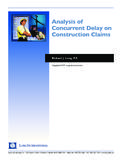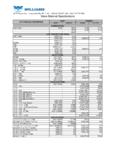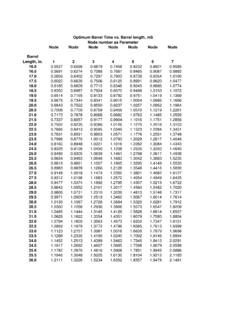Transcription of The QT interval: How long is too long? - Omni …
1 March/April 2011 Nursing made Incredibly Easy! 17heartmattersWhat s the QT interval and why s it so important? In this article, I ll answer these questions plus show you how to measure the QT interval and how to recognize the types of long QT syndrome (LQTS) and their symptoms, causes, and long and short of itThe QT interval on the ECG is measured from the beginning of the QRS complex to the end of the T wave (see ECG components).
2 It represents the time it takes for the ventricles of the heart to depolarize and repolarize, or to contract and QT interval is longer when the heart rate is slower and short-er when the heart rate is faster. So it s necessary to calculate the corrected QT interval (QTc) using the Bazett formula: QT interval divided by the square root of the R-R interval . The R-R interval is measured from one R wave to the next R wave that comes before the QT interval being measured. For example, if the QT interval measures second and the R-R interval measures second, then the QTc is normal QT interval varies depending on age and gender, but it s usually to second (see QT interval ranges).
3 Anything greater than or equal to second is considered dangerous for any age or gender; notify the healthcare provider are several factors that make it diffi cult to measure the QT interval . A wide QRS complex on an ECG may give the appearance that the QT interval is pro-longed. However, a wide QRS complex represents depolarization, and LQTS is a dis-order of repolarization. Sometimes the end of a T wave isn t clearly defi ned, which can make it diffi cult to get the QT measurement. Irregular rhythms also make it diffi cult to obtain a consistent QT interval measure-ment. For example, atrial fi brillation makes it extremely diffi cult to measure a QT inter-val because fi nding a T wave isn t always The QT interval : How long is too long ?
4 By Natalie K. Cox, RNStaff Nurse Coronary Care Unit McLeod Regional Medical Center Florence, componentsECG componentsFirst positivedeflection after theP or Q waveFirstnegativedeflectionafter the P waveFirstnegativedeflectionafter the R to to to secCopyright 2011 Lippincott Williams & Wilkins. Unauthorized reproduction of this article is Nursing made Incredibly Easy! March/April 2011 with this rhythm. The best thing to do is measure fi ve or six QT intervals and average them lead of an ECG will most likely give you a slightly different QT measurement. When measuring QT intervals, it s important to fi nd a lead on the ECG that has a T wave with a clearly defi ned end.
5 Always use that lead when measuring your QT interval , and remember to be consistent with your measurement technique (see Calculating QT interval duration).How did it get so long ?LQTS is a result of the heart s electrical sys-tem recharging abnormally. There are two types: acquired and congenital. Acquired LQTS is caused by an underlying medical condition, such as drugs that prolong the QT interval , electrolyte imbalances (such as caused by anorexia), and bradycardia. Con-genital LQTS is inherited from one or both parents. In addition, there are 12 different subtypes of LQTS, labeled LQT1 to are many drugs that can prolong the QT interval , such as some antibiotics, antidysrhythmics, antihistamines, antifun-gals, and antipsychotics.
6 Other categories of drugs that cause QT prolongation are some heart medications, cholesterol-lowering drugs, and diabetes medications. This doesn t mean that all drugs in these catego-ries can cause it, but many of them can. A person is more likely to develop QT prolon-gation from these drugs if they have the following risk factors: renal dysfunction, hypokalemia, hypomagnesaemia, bradycar-dia, advanced age, female gender, underly-ing heart disease, and polypharmacy. Be aware of these risk factors in your patients and be aware of the drugs they re you start a patient on a new drug that may prolong the QT interval , always document the baseline QT interval before administering the drug.
7 Continue monitoring and documenting the QT inter-val at least once every 8 hours. Talk to the healthcare provider about correcting any electrolyte imbalances, such as low potas-sium, magnesium, calcium, and sodium, before starting the drug. Keep the patient on a cardiac monitor and look for signs of impending torsades de pointes (TdP).Congenital LQTS is a genetic mutation of the ion channels in the cardiac cells. It affects the fl ow of potassium and sodium in and out of the cells. Genetic testing is QT interval rangesAge 1 to 15 Adult manAdult womanNormalLess than secondLess than secondLess than to to to secondProlongedGreater than secondGreater than secondGreater than secondSource: Jacobson C.
8 long and short of it: What s up with the QT interval ? Calculating QT interval durationCount the number of squares from the beginning of the QRS complex to the end of the T wave. Multiply this number by second. The normal range is to second, or 9 to 11 small squares 2011 Lippincott Williams & Wilkins. Unauthorized reproduction of this article is March/April 2011 Nursing made Incredibly Easy! 19used to determine whether a person has the congenital form.
9 Three of the congeni-tal types are more common than the oth-ers: LQT1, LQT2, and LQT3. People with congenital LQTS are prone to go into TdP when there s an external stimulus. The trig-gers for TdP are somewhat specifi c to the type of LQTS a person has (see TdP triggers in congenital LQTS).Beta-blockers are the main medication used for the management of congenital LQTS. If medication isn t successful, then the patient may need dual chamber pacing at a rate to shorten the QT interval . For patients at increased risk or those who continue to experience severe life threatening cardiac events, an implantable cardioverter defi bril-lator is strongly you take care of a patient newly diag-nosed with congenital LQTS, patient educa-tion needs to be a priority.
10 Teach the patient to prevent adrenergic surges in heart rhythm by avoiding loud noises, such as telephones, doorbells, and alarm clocks. The patient may need to turn down the doorbell and phone volume or turn the phone ringer off at night. Also teach the patient to avoid overexertion. Patients with confi rmed LQTS1 or LQRS2 shouldn t participate in competitive sports. Tell the patient to seek medical attention TdP triggers in congenital LQTS LQTS1: Emotional stress or exercise, espe-cially swimming or diving LQTS2: Extreme emotions or surprises, such as harsh, sudden noises LQTS3: Slow heart rate while sleepingSource: National Heart, Lung, and Blood Institute.










